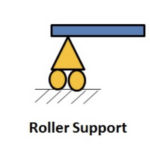Assume you’re seated in a chair, under the influence of gravity. Do you believe gravity is exerting its influence on you? If you answered yes, you are incorrect because the force of gravity is counterbalanced by the normal force that keeps you seated in your chair. However, if you relocate the chair a short distance, you can perform work.
Work consists mainly of an exchange of force or energy. The work performed, on the other hand, acts as a link between these forces or energies. A system can work by either transferring energy to its surroundings or absorbing energy from them.
In this post, we’ll look at the various forces that drive work to be done. The methods utilised to calculate the problems linked to work done are also included in this post. It’s crucial to first comprehend the definition, formula, and instances of work done before learning how energies are transferred.
Definition of Work
“The product of the applied force and the displacement in the direction of the applied force is work or the dot product of two vectors, force and displacement, is work.”
SI Unit of Work
Joule is the SI unit of work. If a force of one Newton moves a body one meter, its energy is one Joule (1J = Nm). It is denoted by the letter J.
Formula
Take the previous example and pretend that you are moving a chair by applying a force F such that the chair covers a distance d in the direction of force. In this case, the work you did on the chair can be represented as:
Work done = W = F.d
Work done = W = (Fcosθ) d
Where Fcosθ is the force component along the displacement directions and d is the amount of displacement.
Explanation:
From the formula it is clear that work can only be done by force and has at least one component of it along the direction of displacement. Moreover, the numerical value of work done may be positive or negative depending upon the direction of the force.
- Assume you’re going to be carrying a 5-kilogram iron block. You’ll be startled to realize that you’re accomplishing nothing because gravity is pulling the block downwards and block covering the displacement in a perpendicular direction.
- Now if apply the force to the same block in the horizontal direction the work will be done by you on the block because the force has its maximum component along the direction of displacement. In this case, the work done will be considered positive.
- Similarly, if you throw that same block vertically upward then the work done by the gravitational force will be negative because the direction of the force of gravity is opposite to the displacement.
Also Read:
- What is Stress in Strength of Materials?
- 14 Mechanical Properties of Materials that You Don’t Know
- Stress Strain Curve – Relationship, Diagram and Explanation
Solved Examples of Work Done:
Example 1:
Calculate the work done by the player and also explain the sort of work done if a football player hits the ball with a force of 100N and the ball reaches a distance of 50m between two poles.
Given data:
Force = F = 2000N
Displacement = d = 20m
To Find
Work done = W =?
Solution: Manual method
Write the general formula of work done.
W = Fd
Or
W = F ×d
Put the values in the general formula.
W = (100N) (50m) = 5000Nm
W = 5000J
As a result, the worth of the work done has been calculated, and it is 5000J. The work done is positive because the force is in direction of displacement.
You can also use meracalculator to compute work done of the given problem.
Follow the procedures outlined below to compute work done using the calculator.
- Step 1: Search the work calculator in the physics category of meracalculator.
- Step 2: Choose the sentence you want to calculate from the drop-down menu.
- Step 3: After entering the all values click on calculate button to get the result.
- Step 4: Now, if you want to check the steps used for the calculations, click on the Show Steps button.
Example 2:
Calculate the vertical distance travelled by the spoon if it is subjected to 50N gravity and does 250J of work.
Given data:
Force = F = 50N
Work done = W = 250J
To Find
Displacement = d = 20m
Solution: Manual method
Write the general formula of work done.
W = F * d
Or
W = F × d
Put the values in the general formula.
250J = (50N) (d) or d = 250J / 50N = 250Nm / 50N
d = 5m
As a result, the numerical value of distance has been calculated, and it is 5000J. The work done will be negative because the direction of force is opposite to the displacement.
Example 3:
If a vertical force of 10N is applied to a chair so that the chair tends to come to rest, calculate the work done.
Given data:
Force = F = 10N
To Find
Work done = W =?
Solution: Manual method
Write the general formula of work done.
W = F * d
Or
W = (F * cosθ) d
W = (Fcos90) 0
W = (F(0)) 0
W = 0J
Now since the angle of force is 90 and the distance is also 0 therefore no work will be done by the force.
Summary:
From this article, it is clear that Work or transfer of energies is important in not only in theoretical subjects but also plays an important role in activity-based problems. When a force is applied to a system over a distance, work is generally thought of as the type of energy that is conveyed.
From kinetic energy to potential energy or any type of energy we rely on work done. We have also acknowledged that the type of work done strictly depends upon the direction of the force. The direction of force may be along or opposite to displacement.
From manual and calculator methods you have the choice to use a work calculator to fasten your longer calculations




